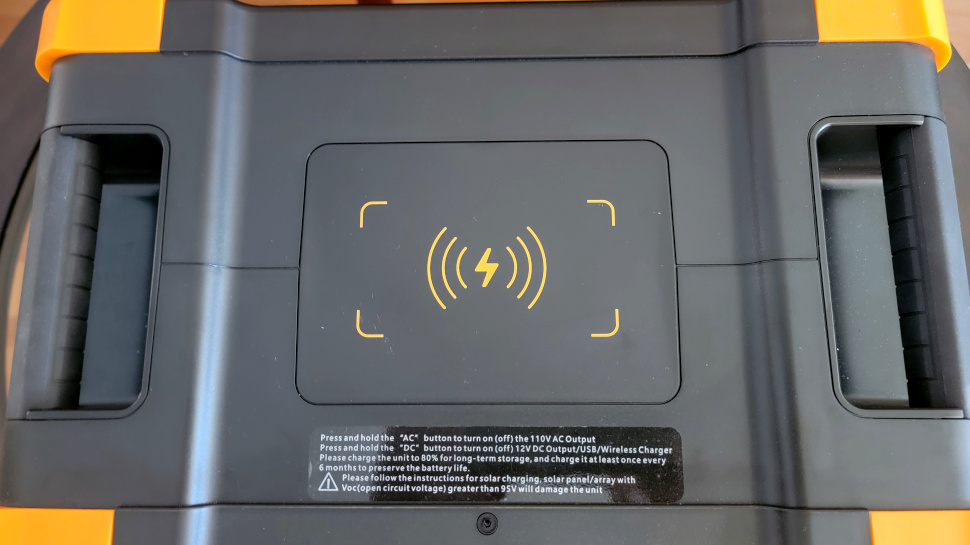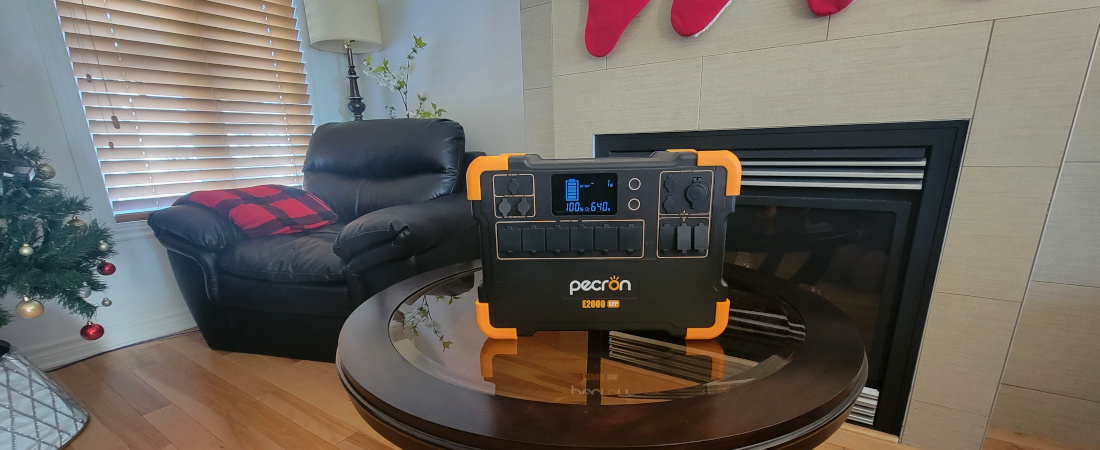TechRadar Verdict
Pecron gives good value for money with its new E2000LFP, a 2000W power station based on LFP battery technology and with expandable battery options. Its wide voltage range on two DC inputs is suitable for solar charging, while the lack of power saving feature makes it feels like it has been rushed to production.
Pros
- +
Low cost
- +
LFP battery
- +
Expandable
- +
Good DC input range for solar
Cons
- -
No power saving
- -
External power supply
Why you can trust TechRadar
The Pecron E2000LFP portable power station is one of the cheapest 2000W to incorporate Lithium Iron Phosphate (LFP) cells, giving over 3500 charge cycles before losing 20% of its initial capacity. The E2000LFP offers plenty of AC and DC sockets, and the user can expand the battery capacity with additional storage units for up to 8kWh. It can accept three MPPT solar inputs supporting a combined power of 1300W.
The E2000LFP main unit is lighter than the competition, partly due to an external 600W AC power supply. Charging through AC takes about four hours. A maximum AC output power of 2000W, which can be doubled for short periods, means that most home appliances will work fuss-free with the station. The E2000LFP remains an excellent value for money and is backed by a two-year warranty.
Pecron E2000LFP: Price and availability
The base unit has an MSRP of $1499. Several solar options exist, with the most expensive 1200W panels priced at $3799. The 3000Wh battery expansion will cost an extra $1599.

Pecron E2000LFP: Design
The E2000LFP is shipped with four accessories, including an imposing AC power supply block that can output a maximum of 600W. Other accessories include a car charging and two MC4 solar charging cables. The power station measures 41cm x 26cm x 29cm and sports rubber caps over all corners, also serving as feet for the 22kg unit. The solid plastic case has two handles on each side and allows transporting the unit anywhere it is needed.
The front panel has one input and two output sections. The manufacturer has been generous and provides six 120V AC sockets that can supply a maximum of 2000W power. This power limit can be exceeded for a short period, the maximum surge being 4000W. An AC overload alarm goes on when the power is exceeded for a long time.
The DC section consists of USB, barrel types, cigar ports, and wireless charging. The cigar port outputs a regulated 12V at 10A while two DC 5525 12V/36W barrel sockets enable charging high-powered gadgets such as drones. The USB section has four Type-As, three capable of 10W and one at 18W. Two Type-Cs can output 18W and 100W, while integrated wireless charging supports up to 15W.
The Pecron power station has a few ways to charge the batteries. Two GX16MF-5 ports, each capable of 600W at a maximum of 95V, are provided on the front. They support charging with the AC adapter or with solar panels. Two included MC4 cables connect solar panels with MC4 outputs to the power station inputs. The second charging method is through a DC5521 socket, rated at 18V/100W maximum.
Sign up to the TechRadar Pro newsletter to get all the top news, opinion, features and guidance your business needs to succeed!

Pecron E2000LFP: In use
The entire unit is controlled through two push buttons. The first activates the DC section of the station, while the second does the same for the AC section. The two buttons also have secondary functions that display the current battery voltage and the power factor of the output. An always-on segment display shows all pertinent information to the user. Since the backlight isn’t very bright, the information presented is hard to read in daylight.
The E2000LFP is one of the few power stations that does not support energy saving by turning unused outputs off. When powered on, the battery slowly drains and typically dies after two weeks from a full charge, without anything connected to the outputs. Energy is also wasted by the always-on display. Two large fans on the right can be loud when the unit is charging or when a large electric load is connected to the output.
The Pecron E2000LFP can increase its battery capacity through EB3000 battery packs, available from Pecron’s website for $1600. The EB3000 is a 3kWh LFP battery and represents a great investment as it offers built-in MTTP solar charging and a couple of low-voltage DC outputs. The E2000LFP can accept up to two extra EB3000, providing a maximum of 8064Wh battery capacity.

Pecron E2000LFP: Competition
The Pecron E2000LFP is in a class of its own, being the only affordable power station with battery expansion. The price tag is impressive for the battery type offered, while the many low-voltage outputs will satisfy everybody with electronic devices such as smartphones that needs a charge.
The closest competitor to the E2000LFP is the Bluetti AC200MAX which offers the same battery technology and expansion option. The Bluetti station is bigger and heavier than the E2000LFP and features fewer AC output connections. The solar input on the Bluetti can accept only 900W compared to 1200W for the Pecron. But the most significant selling point of the E2000LFP remains its unmatched price at $1499 compared to $1899 for the Bluetti.
Pecron E2000LFP: Final verdict
The Pecron E2000LFP is best described as a workhorse. Its 2000Wh battery and 2000W AC inverter will take almost anything thrown at it in the house. Equipped with six AC and ten DC outputs, it can adequately power a small garage or shed. The 1200W solar input of the E2000LFP provides flexibility in terms of panel choices. The unit can also be charged through an external power block, which ideally should have been built in the station.
The battery capacity can be increased to over 8000W with additional battery units, and thanks to being LFP, the cells offer more than 3500 charge cycles before having a 20% drop in capacity. A convoluted push-button interface and no power-saving functionality are the two main drawbacks of the E2000LFP, while the 2000W AC output, excluding surge, is in line with the competition. The Pecron power station is still one of the cheapest 2kW LFP units available, backed by a two-year warranty.
We've featured the best power banks.
My interest has been piqued by everything electronic since a young age, with a penchant for the dark art of tearing things apart. My daily duty is to marry software and hardware modules and I have to admit that this is much harder than cooking. When I’m not busy at work, I’m on the lookout for the latest and greatest hack! I am passionate about portable power generators (or power stations) as well as maker products such as the Raspberry Pi and any similar SBC (single board computers)

